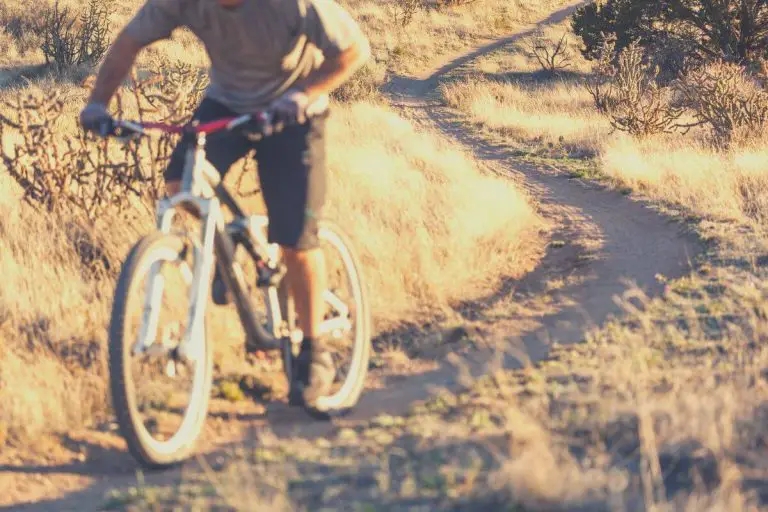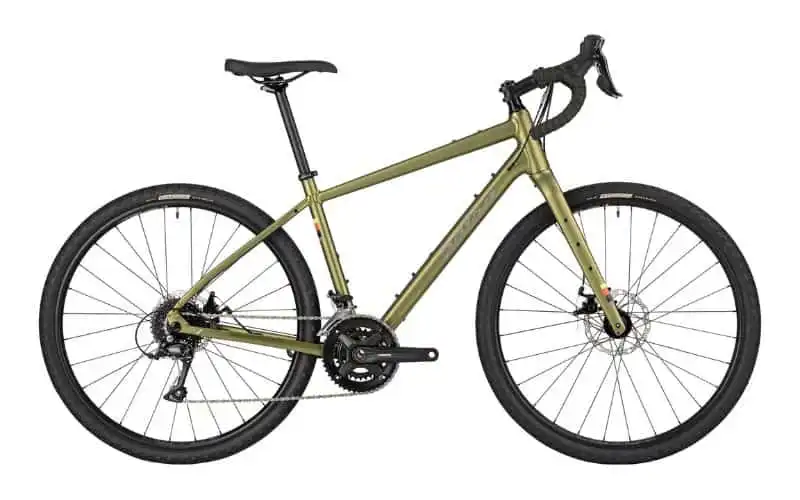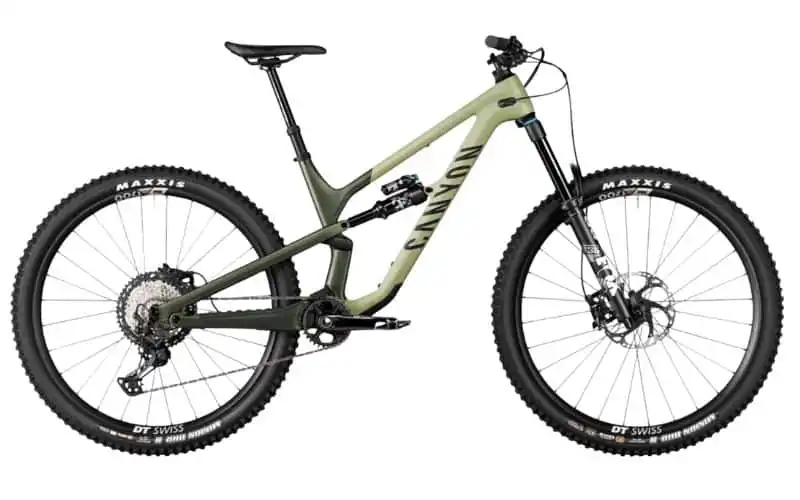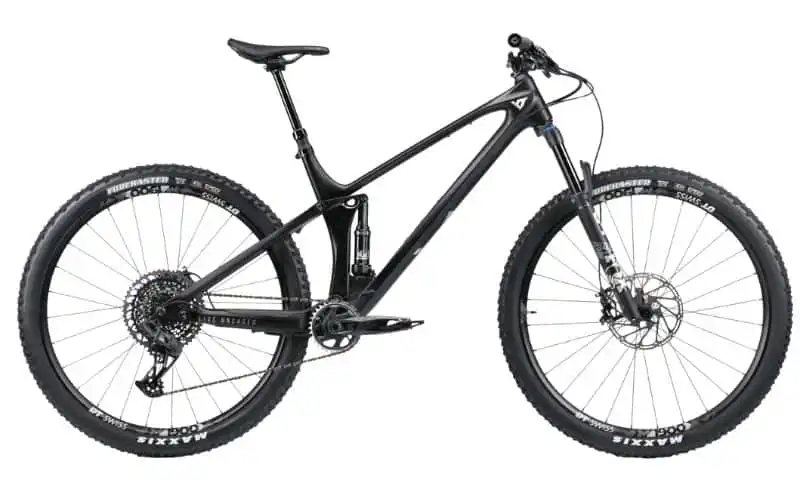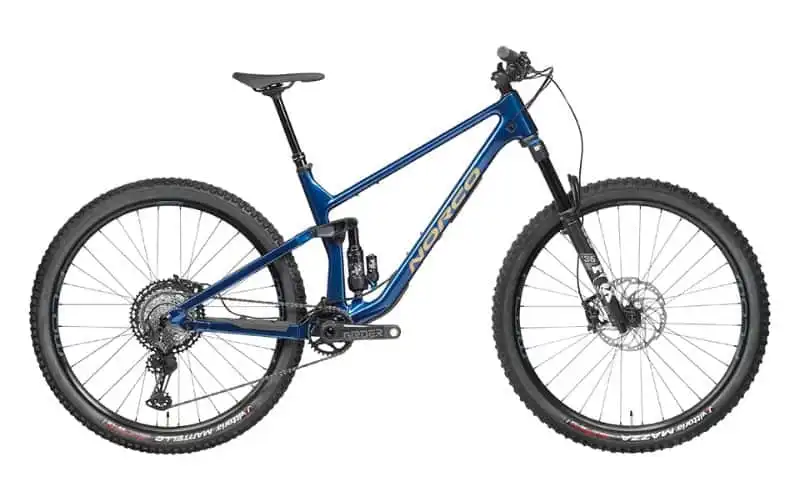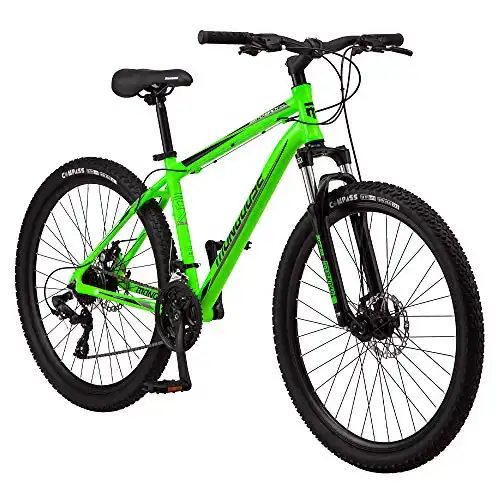Are you struggling on flat trails with a bike that doesn’t seem to help? The key is choosing the right bike for flat trails, where simplicity often trumps complexity. The best bike for flat trails is one that enhances the ride, not complicates it.
As someone who has experienced these trails and consulted with other trail enthusiasts, I believe we all seek a bike that feels effortlessly efficient on flat terrain.
Unfortunately, there isn’t a blanket “best trail bike” that works for everyone. If anyone tells you this, they’re lying! The aim of this guide is to help expose you to the options available on the market and help you find one that fits your needs.
With that out of the way, let’s dig into the details!
Our Five Favorite Best Bike For Flat Trails
- Balance between weight, control, and speed
- Allows for fast travel
- Several helpful amenities
- Impressive speed and control
- Great on flat trails in all weather conditions
- Pleasant ride feel for beginners
- 21-speed shifter for effortless gear transitions
- Dependable stopping power
- Durable double-wall alloy rim design
Detailed Reviews of the Best Bike For Flat Trails
Salsa Journeyer Sora
- Balance between weight, control, and speed
- Allows for fast travel
- Several helpful amenities
- Aluminum frame
- Soft brakes require an adjustment period
The Journeyer Sora 650 is the most popular model in this newest Salsa line. It makes up for any downsides the aluminum alloy frame might give. It has large wheels for more stability and even weighs 24 pounds, a couple of pounds heavier than the standard.
Despite that above-average weight, the Salsa Journeyer Sora remains fast and flexible. You can hit incredible speeds going downhill or on even terrain while the robust frame and wheels keep you comfortable.
However, be wary of traveling too fast on unfamiliar terrain. The disc brakes on the Salsa Journeyer Sora are a bit softer than similar high-end bikes.
The Journeyer Sora 650 also offers several amenities despite costing less than the average high-end trail bike. This bike includes everything from a bottle and utility cages to a feed bag.
The biggest downside of Salsa’s Journeyer Sora line is the frame. Unlike most industry-standard trail bikes with carbon frames, the Journeyer Sora has an aluminum alloy frame. As a result, it has a heavier bike weight that many trail riders can’t get behind.
It’s an excellent bike for flat trails if you crave comfort at a reasonable price.
Canyon Spectral 29 CF8.0
- Impressive speed and control
- Great on flat trails in all weather conditions
- Pleasant ride feel for beginners
- Smoothness doesn’t allow for sharp movements
- Expensive
Canyon crafted the Spectral 29 CF8.0 for rapid speeds on flat trails.
The angles on the head tube and seat and the height of the bottom bracket are all well-situated for fast, effortless travel. Furthermore, the wheels and frame allow you to maintain control and comfort even while riding full steam ahead.
Climbing unexpected hills or obstacles in the Canyon Spectral 29 CF8.0 is a breeze, even without switching speeds. You’ll barely notice the terrain shift because of the bike’s smooth ride feel.
However, the bike’s smoothness comes at the expense of sharper navigation. So, you might not feel as much control over your change of direction as you would with other trail bikes. Still, you’ll feel comfortable cruising in straight lines while on the Canyon Spectral 29 CF8.0, no matter what’s in your way.
The bike boasts a robust 29-inch wheel size and strong suspension fork. The 150-millimeter suspension travel keeps your tires glued to flat surfaces, regardless of the weather elements.
YT Izzo Core 3
- Unrivaled control
- Easy to ride in rugged terrains
- Great fit for beginners
- Poor freehub response
- Limited speed because of its rugged design
The YT Izzo Core 3 comes with a full-carbon frame. This structure gives it impressive control and strength, even alongside other high-end trail bikes. With that control and the bike’s 29-inch wheels, you’ll easily conquer whatever obstacles block your path.
The YT Izzo Core 3’s ruggedness and large tires make it great for challenging paths or mountain biking. However, those features aren’t always necessary on flat trails. As a result, this bike will feel more limited than its competitors when trying to build high speeds on smooth surfaces.
The YT Izzo Core 3 also has a slightly non-responsive freehub, hindering your ability to coast on flat paths.
Still, the YT Izzo Core 3 remains a solid bike for beginner riders on flat trails. It comes in five sizes, and its emphasis on stability makes any terrain accessible regardless of skill level.
Norco Optic C2
- Lightweight and versatile trail bike
- Aesthetics
- Not the best brakes
- Durability
The top selling point of the Norco Optic C2 is its suspension. The bike has specially designed shocks and a 125-millimeter suspension travel. You’ll never feel out of control during your flat trail ride.
With the Norco Optic C2’s stability, you can focus on building impressive speeds on smooth terrains. The bike has ideal angled geometry, so don’t be surprised if you navigate your regular trail quicker than usual.
Durability is the major downside for the Norco Optic C2. The rotors and brake pads wear down quicker than on other trail bikes, especially since you won’t want to stop riding this one!
However, if you’re okay with occasional tune-ups, the Norco Optic C2 is one of the best trail bikes to date.
Mongoose Switchback Trail Bike
- 21-speed shifter for effortless gear transitions
- Dependable stopping power
- Durable double-wall alloy rim design
- Bike may feel slightly small for some riders
- Derailleur may require fine-tuning upon arrival
Comfort and control often top the list of requirements for a flat trail bike.
With its trail-ready alloy mountain frame, the Mongoose Switchback addresses this, offering a smooth ride while catering to users from 5’4” to 6’2” tall. The suspension fork works to absorb the bumps along the path, adding to your comfort.
Durability is also crucial for any bike that tackles the great outdoors. The double-wall alloy rims stand up to the challenge, providing a sturdy ride without adding extra weight. Paired with 27.5-inch wheels wrapped in Mongoose’s wide tires, your adventures through varied terrains are set to be both steady and exhilarating.
Any seasoned biker knows the importance of reliable brakes. Thankfully, the Mongoose Switchback doesn’t disappoint. It has front and rear disc brakes that offer solid stopping power in all conditions. Whether dealing with dry summer trails or slick autumn paths, these brakes provide a safe and secure ride.
If you’re searching for a bike that balances performance and price, the Mongoose Switchback should be at the top of your list.
How To Choose A Bike For Flat Trails
Evaluate Your Needs
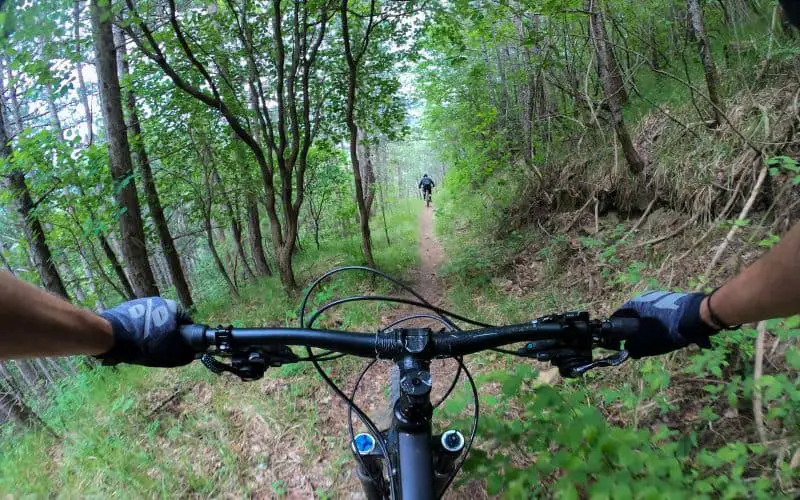
Before you choose a bike for flat trails, consider your riding style.
Are you looking for leisure rides, daily commutes, or a fitness routine? Your purpose greatly influences the type of bike suitable for you.
Key Features to Consider
Frame Material
- Aluminum is lightweight and affordable, ideal for common trail riding.
- Carbon fiber offers reduced weight and increased stiffness but at a higher cost.
Tire Type and Size
- Look for tires that provide good traction and are wide enough for stability.
- Standard sizes range from 26 to 29 inches. Larger tires roll over obstacles easier.
Suspension
- Hardtail bikes have front suspension and are more efficient on flat trails.
- Full suspension bikes absorb more shock but are typically not necessary for flat terrains.
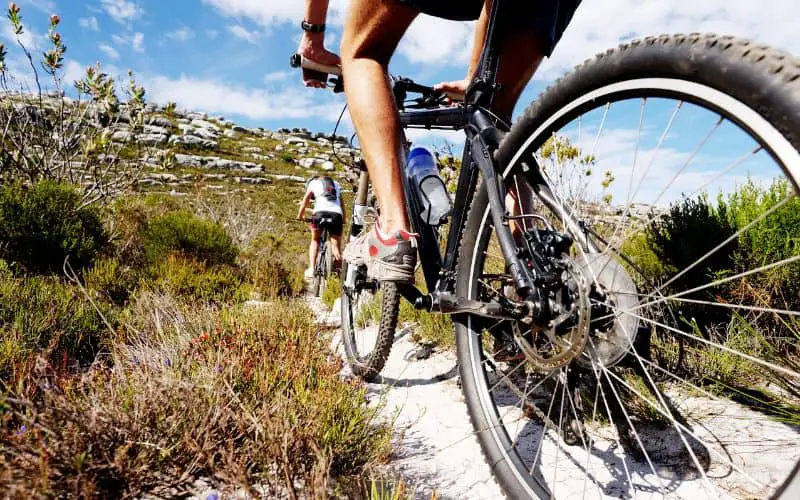
Gearing System
- Single-speed bikes are low-maintenance and sufficient for flat trails.
- Multi-gear bikes give more flexibility in speed and are better for varied landscapes.
Comfort and Fit
- Ensure the bike frame fits your height for a comfortable ride.
- Adjustable seat posts and handlebars help in fine-tuning your riding position.
| Feature | Recommendation |
|---|---|
| Frame Material | Aluminum for casual use |
| Tire Size | 26 inches for agility |
| Suspension | Hardtail for flat trails |
| Gearing | Single-speed for ease of use |
Interesting take on hills vs flat terrain:
Frequently Asked Questions
What is the best type of bike for flat trails?
The ideal bike for flat trails is typically a hybrid bike or a flat-bar road bike. These bikes combine a mountain bike’s comfort with a road bike’s speed, making them perfect for flat terrain.
Key features to look for include lightweight frames, comfortable seating, and smooth-rolling tires.
Are mountain bikes good for flat trails?
While mountain bikes are designed for rugged terrain, they can also be suitable for flat trails, especially for riders seeking a more robust and sturdy bike. They offer excellent traction and stability, although they might be slower compared to hybrid or road bikes due to their heavier build and wider tires.
Can I use a road bike on flat trails?
Road bikes can be used on flat trails, especially if the surface is smooth and well-maintained. They are fast and lightweight, offering an efficient ride. However, they might not be as comfortable or durable as hybrid bikes on slightly rougher trails.
Is tire width important for flat trail cycling?
Yes, tire width can impact comfort and traction on flat trails. Wider tires provide more stability and can handle varied surfaces, while narrower tires are faster and more efficient on smooth trails.

